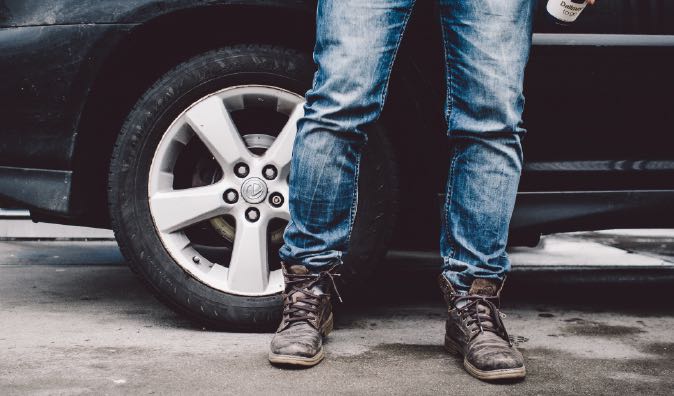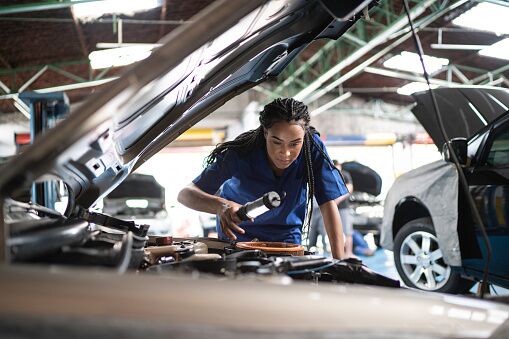Featured
Brakes are arguably the most vital security attribute of any automobile. Without trusted brakes, even the most effective auto can end up being a risk on the road. That's why normal brake examinations are a have to for guaranteeing your car stops when you require it to. Adhering to a correct brake examination timetable can not just keep you secure but likewise help you stay clear of pricey repairs. Below's an in-depth overview on exactly how to appropriately evaluate your brakes and what to watch out for.
- The Importance of Routine Brake Inspections. Brakes undergo constant deterioration with every use, whether you're driving at high speeds on the freeway or travelling with city streets. With time, brake pads, rotors, and various other elements use down, which can impact stopping performance. Without regular assessments, you may not discover the progressive decrease in efficiency up until it's far too late.
Routine brake assessments allow you to capture problems early, ensuring that your brakes remain responsive, trustworthy, and safe. Prompt evaluations can likewise save you money by addressing minor issues before they become expensive repair services.
- Typical Indicators That Your Brakes Need Interest. While routine brake inspections are crucial, there are some indication you can look out for to understand when it's time to set up a check-up:
Squeaking or Grinding Sounds: High-pitched squeaks or grinding sounds when applying the brakes are commonly signs that your brake pads are worn and require replacement. Resonance or Pulsation: If you feel vibrations in the steering wheel or the brake pedal, it can show deformed blades, which might require resurfacing or changing. Soft or Squishy Brake Pedal: If the brake pedal really feels abnormally soft or mushy, there may be air in the brake lines or a problem with the master cyndrical tube. Drawing to One Side: If your auto draws to one side while stopping, this can be triggered by unequal brake pad wear or a concern with the brake liquid. Raised Stopping Distance: If it takes longer to quit than common, it may indicate that the brake pads are worn, the fluid is reduced, or the blades are harmed. If you observe any of these symptoms, it's ideal to have your brakes examined immediately.

- Key Elements Checked During Brake Inspections. Throughout a brake assessment, a professional will certainly check several vital components of the braking system to guarantee everything is functioning effectively. Right here are the essential parts included:
Brake Pads: One of the most common reason for bad braking efficiency is damaged brake pads. Checking the thickness of the pads is a top priority during every evaluation. Brake Rotors: Rotors ought to be smooth and without grooves or splits. Any significant damages to the blades might result in endangered stopping efficiency and unequal pad wear. Brake Liquid: Reduced or polluted brake liquid can harm stopping performance. The service technician will certainly check the liquid degrees and quality and replace it if necessary. Brake Lines and Tubes: Brake lines should be devoid of leakages or cracks. Any damages to the lines can result in loss of brake fluid, leading to brake failing. Brake Calipers: The calipers apply pressure to the brake pads. They ought to be inspected for indications of wear or leaks to ensure they are functioning correctly. Frequently examining these parts assists maintain your brake system in peak problem, enabling you to quit your car safely and efficiently.
- How Usually Should You Have Your Brakes Inspected? The general recommendation is to have your brakes checked at the very least yearly or every 12,000 miles, relying on your driving routines. Certain driving problems may need even more frequent assessments:
Rush Hour: If you usually drive in stop-and-go traffic, your brake pads will certainly wear down faster. Mountain Driving: Driving on steep roads needs more constant stopping, which can trigger your brakes to use faster. Towing or Hauling Heavy Plenties: If you consistently bring heavy tons, your brakes will experience much more tension and need even more frequent assessments. If you see any one of the caution signs pointed out earlier, do not wait on the following scheduled examination-- have your brakes inspected quickly.
- The Effects of Ignoring Brake Inspections. Ignoring routine brake examinations can lead to serious consequences. A stopping working brake system can result in minimized quiting power, which boosts your risk of crashes.
In the most awful situation, driving with damaged brakes can bring about complete brake failure, putting you and other vehicle drivers in jeopardy. Regular brake examinations are a small financial investment that can conserve your life and avoid costly repairs.
- Verdict: Stay Safe with Routine Brake Inspections. Brakes are not something you want to take opportunities with. A trustworthy stopping system is important for risk-free driving, and regular brake inspections are a straightforward means to ensure that your automobile stops when you require it most. By remaining on top of brake maintenance, expecting warning signs, and having your brakes examined at the suggested intervals, you'll secure both your vehicle and your security.
Don't wait until your brakes begin to fall short-- schedule normal brake evaluations and keep your lorry in ideal condition for years to come.
Latest Posts
Keep Your Carpet Looking Its Best with Easy, Expert Care
Stylish, Resilient Floor Tile Flooring for Every Room
Find Out the Montclare Expertise - Professional Auto Repair
